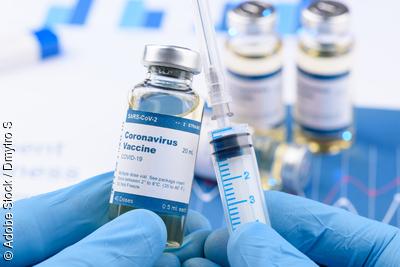Vaccines have long stood as a cornerstone of public health, preventing countless illnesses and saving millions of lives worldwide. Recent research from the Johns Hopkins Bloomberg School of Public Health underscores not only the critical health advantages of widespread immunization but also its substantial economic benefits. As nations grapple with the ongoing challenges of infectious diseases, this comprehensive analysis sheds light on how vaccines not only curb the spread of disease but also drive economic growth by reducing healthcare costs and boosting productivity. This article delves into the latest findings, highlighting why investment in vaccines remains a vital priority for global health and economic stability.
The Role of Vaccines in Reducing Global Disease Burden
Vaccines have transformed the landscape of global health by dramatically decreasing the incidence of infectious diseases that once claimed millions of lives annually. Through widespread immunization programs, illnesses such as polio, measles, and diphtheria have been pushed to near eradication in many regions. This progress not only saves lives but also alleviates overwhelming pressure on healthcare systems, enabling resources to be redirected toward other critical medical needs. In countries with limited healthcare infrastructure, the role of vaccines becomes even more vital, providing a frontline defense that curbs outbreaks and supports public health resilience.
Key benefits of immunization include:
- Reduction in child mortality rates
- Prevention of long-term disabilities caused by vaccine-preventable diseases
- Lower healthcare costs due to fewer hospitalizations and treatments
- Strengthened economic productivity by minimizing illness-related work absences
| Disease | Cases Prevented Annually (Millions) | Economic Savings (Billion USD) |
|---|---|---|
| Measles | 20 | 5.5 |
| Polio | 2 | 1.2 |
| Hepatitis B | 5 | 3.0 |
| Influenza | 50 | 10.0 |
Economic Impact of Immunization on Healthcare Systems
Immunization programs significantly alleviate the financial pressures on healthcare systems by reducing the incidence of vaccine-preventable diseases. These reductions translate to fewer hospital admissions, emergency room visits, and long-term care costs associated with chronic conditions developed from infections. Moreover, vaccination minimizes the economic burden on families and communities by preventing work absences and loss of productivity caused by illness. Health systems globally report that every dollar invested in vaccines saves multiple dollars in treatment and disease management, emphasizing the cost-effectiveness of immunization initiatives.
- Lower hospitalization rates: Dramatic decreases in severe illnesses such as pneumonia and meningitis.
- Reduced antibiotic usage: Prevents antibiotic resistance by curbing preventable infections.
- Long-term economic savings: Fewer chronic complications reduce lifetime healthcare expenditures.
- Improved workforce productivity: Healthy populations contribute more effectively to economic growth.
| Vaccine | Estimated Savings Per $1 Invested | Key Health Outcome |
|---|---|---|
| Measles | $58 | Reduced child mortality |
| HPV | $35 | Lower cervical cancer rates |
| Hepatitis B | $20 | Decreased liver disease |
Policy Recommendations to Enhance Vaccine Accessibility and Uptake
To bridge the gap between vaccine availability and community reach, policymakers must prioritize equitable distribution strategies. This includes expanding mobile clinics in underserved areas, reducing out-of-pocket costs, and implementing culturally tailored outreach programs that dismantle hesitancy and misinformation. Leveraging digital health platforms for appointment scheduling and reminders can also enhance accessibility, especially among tech-savvy younger populations and working adults who face time constraints.
Financial incentives and legislative measures further amplify vaccine uptake. Governments and organizations should consider:
- Tax credits and subsidies for vaccine manufacturers to ensure steady supply chains and affordability.
- Paid leave policies for employees to get vaccinated and recover without income loss.
- Mandatory vaccination requirements in high-risk environments like healthcare and education sectors.
| Policy Action | Expected Outcome | Key Stakeholders |
|---|---|---|
| Mobile Vaccination Units | Boosts access in rural & urban underserved zones | Local Health Departments, NGOs |
| Paid Leave for Vaccination | Increases employee participation rates | Employers, Labor Unions |
| Public Education Campaigns | Reduces vaccine hesitancy and misinformation | Media, Community Leaders |
In Conclusion
As the global community continues to navigate public health challenges, the insights from the Johns Hopkins Bloomberg School of Public Health underscore the vital role vaccines play-not only in safeguarding individual health but also in bolstering economic resilience. By preventing disease outbreaks and reducing healthcare costs, vaccines emerge as a critical investment for governments and societies worldwide. Moving forward, sustained support for vaccination programs will be essential to ensure healthier populations and more stable economies in an increasingly interconnected world.































